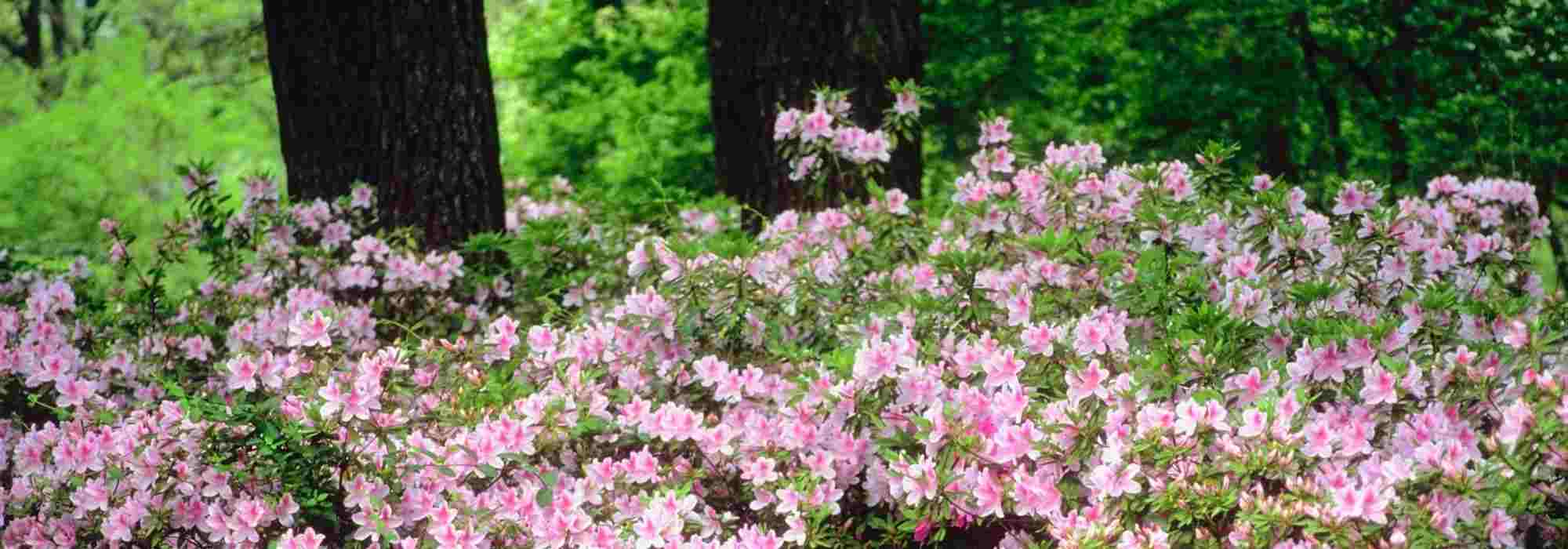
6 shrubs for a North-facing garden
Colour, clarity, and fragrance!
Contents
Cool temperatures, shade, and humidity are what the shrubs installed in a garden facing North must contend with. Whether deciduous or evergreen, many thrive perfectly in such conditions. Some of these shade plants have beautiful decorative power thanks to their spring or summer flowering, sometimes fragrant. Others charm us with light and refined foliage, very effective in adding a touch of brightness and elegance. For certain specimens, it is the autumn colours of their leaves that warm the atmosphere. Finally, let’s not forget that fruiting can also be very ornamental. Discover our selection of 6 shade bushes to install in your shaded garden.
Symphoricarpos doorenbosii ‘Magical Candy’
Here is a bush which main attraction is its fruiting: the snowberry. Producing berries in white or pink hues, this bush is very decorative during autumn. The Symphoricarpos doorenbosii ‘Magical Candy’ is a particularly generous variety. After a flowering of clusters of small pinkish-white flowers in May-June, it offers us an abundance of fleshy fuchsia-pink berries from August until the first frosts. Many varieties of Snowberry have soft-hued berries, while ‘Magical Candy’ is more colourful and vibrant. You can use its branches adorned with these pearls to create bouquets. However, be cautious, as this plant is toxic and children may be attracted to these candy-like fruits. Note that this very hardy bush is deciduous, losing its dark green foliage in winter. Small in size, with a very compact and bushy habit, it is ideal for restricted spaces. At maturity, it reaches a maximum height of 1.5 m with a spread of one metre. You can place the Symphoricarpos doorenbosii ‘Magical Candy’ in shade or partial shade, in a north-facing garden, alongside the candy bush (Callicarpa japonica with its small purple autumn berries), a Camellia, a Viburnum, and a Mock Orange (‘Innocence’, ‘Natchez’) that takes over in spring with its white flowering.
⇒ We offer other Snowberries on our site.
⇒ The best practices for planting, pruning, and maintaining the Snowberry can be found in our guide.

Symphoricarpos doorenbosii ‘Magical Candy’
Sarcococca 'Winter Gem'
The Sarcococca ‘Winter Gem’ is notable for its evergreen foliage and fragrant winter flowering. Also known as Sarcococca, this bush features glossy foliage, initially pink with a slight purplish hue, which then gradually turns dark green. The elongated, lanceolate shape of the leaves adds elegance. From January to March, tiny white flowers appear in clusters, bordered by pink bracts and emit a lemony fragrance. Following this, small black fruits take their place. This compact bush, which has good hardiness, is perfectly suited for small shaded corners. Very compact, it grows slowly, taking its time to reach 70-80 cm in all directions at maturity. In fact, it can also be planted in pots. In open ground, although it is not demanding, it prefers light, humus-bearing, and slightly acidic soils. In a shady garden, sheltered from cold winds, Sarcococca ‘Winter Gem’ can be combined at the back of a woodland plant bed with: ferns, Brunneras, heathers, Epimediums, and lily of the valley.
⇒ Discover more species and varieties of Sarcococcas on our site.
⇒ Planting, growing, and pruning Sarcococca, we tell you everything!
⇒ Some ideas to combine with Sarcococca.

Sarcococca humilis (x) hookeriana ‘Winter Gem’ (photo Denolf Plantes)
Discover other Shrubs
View all →Available in 0 sizes
Available in 1 sizes
Available in 1 sizes
Available in 1 sizes
Available in 1 sizes
Available in 1 sizes
Available in 1 sizes
Available in 1 sizes
Available in 1 sizes
Available in 1 sizes
Ribes sanguineum ‘White Icicle’
The Ribes sanguineum ‘White Icicle’ stands out from other varieties of flowering currants due to its white flowering. Indeed, flowering currants often have pink flowers. This new cultivar, awarded an Award of Garden Merit in 2002, is quite rare in gardens. However, this early spring-flowering bush is full of charm and benefits. It has the ability to thrive in both sunny and shaded positions. Its numerous pendulous clusters of white flowers scent the air as spring arrives, from March to April, even before the bright tender green foliage has had time to unfurl. Note that its leaves also release a blackcurrant fragrance when crushed. After flowering, from summer to autumn, birds can feast on small bluish-black berries. Its deciduous foliage then takes on warm yellow-orange hues before disappearing for winter. Also known as False Blackcurrant, this white-flowering currant, reaching 2-3 m in all directions, quickly forms a bushy clump, rounded in shape. Resistant to temperatures below -15°C, the Ribes sanguineum ‘White Icicle’ finds its place in cool, well-drained soil, within a country hedge. Shrubs such as Hawthorn, Black Elder, Common Holly, Hornbeam, or even Corylopsis can accompany it.
⇒ Discover more flowering currants on our site.
⇒ To learn more, check our page on the planting, pruning, and maintenance of flowering currants.

Ribes sanguineum ‘White Icicle’
Read also
10 hardy evergreen shrubsHydrangea serrata ‘Veerle’
The Hydrangea serrata ‘Veerle’ is a recent variety of Hydrangea valued for its abundant summer flowering, as well as its dark green foliage with a strong dentate margin, which takes on stunning autumn colours in shades of red to purple. Blooming from June to October, its inflorescences are flat-headed (also known as “lacecap”) and are particularly large (15-20 cm in diameter). They consist of sterile blue flowers around the edge and small fertile flowers in bud at the centre. Their colour changes depending on the soil pH: they are blue in acidic soil or pink in neutral conditions. Additionally, they will turn purple after pollination. For this repeat flowering variety, a second flush of flowers is possible during the summer, provided it has been lightly pruned after the first flowering. You can even dry its refined flowers for creating bouquets. Its montane origins give it good capacity to thrive in cold, damp climates. This Hydrangea will therefore thrive in humus-bearing, fertile, and calcareous soil, in shade or partial shade in a north-facing garden. With a compact growth habit, forming a bush that is wider than it is tall, pair this robust deciduous bush with perennials that prefer acidic soils, such as: Japanese Anemones, Astilbes, Foxgloves, Ferns, and Hostas.
⇒ Discover other varieties of Hydrangea serrata on our site.
⇒ Learn all about the planting, growing, and care of Hydrangeas!
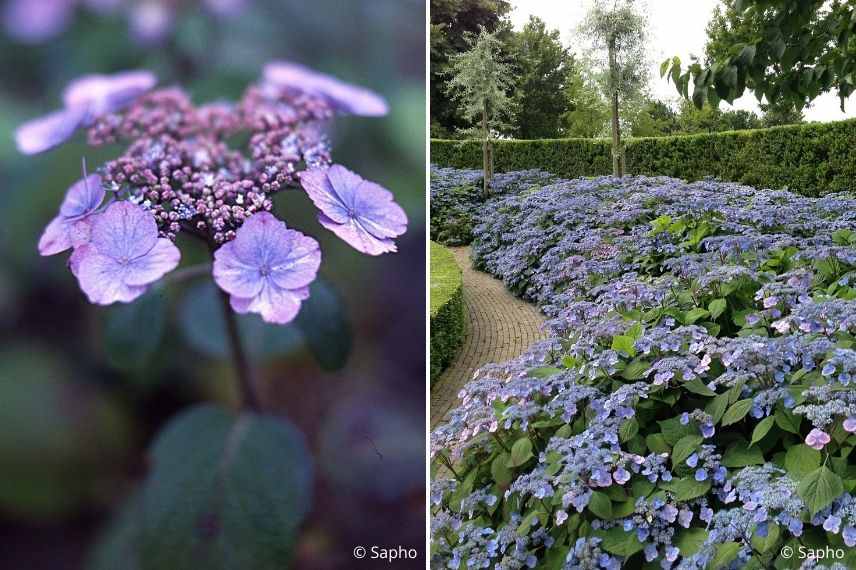
Hydrangea serrata ‘Veerle’
Leucothoe fontanesiana ‘Scarletta’
The Leucothoe fontanesiana ‘Scarletta’, a cousin of heathers and rhododendrons, produces a flowering reminiscent of that of the Pieris, also known as Japanese Andromeda. From May to June, it showcases numerous clusters of cream-white bell-shaped flowers. Its long, dark, and leathery leaves are initially green with a red edge in spring, then turn burgundy and bronze with the arrival of cold. Reaching 1.20 m in height and 1 m in width at maturity, it forms a rounded and regular silhouette. Easy to maintain, this Leucothoe does not require pruning. Little known, this small evergreen bush has good hardiness (temperatures below -15°C) and is perfect in shaded and wind-protected areas, in rather acidic, light soil rich in humus. In a Japanese-style garden, pair it with a Kalmia, a Rhododendron, a Nandina, a Flowering Dogwood (Cornus kousa), and a dwarf conifer.
⇒ Discover more species and varieties of Leucothoes on our site.
⇒ Everything you need to know about planting, cultivating, and maintaining Leucothoe.
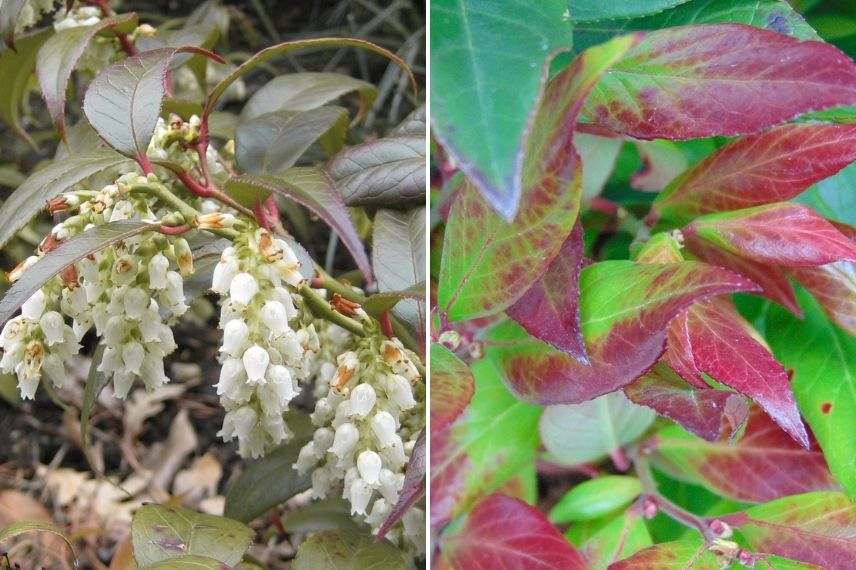
Leucothoe fontanesiana ‘Scarletta’ (photo left: Wikipedia)
Nandina domestica ‘Lemon Lime’
Also known as heavenly bamboo, the Nandina domestica ‘Lemon Lime’ is a recent variety perfect for brightening shaded areas. Indeed, it dresses itself in delicate, pointed foliage that ranges from chartreuse green to lemon green, intensifying through the seasons. This very fresh hue earned it a gold medal at the 2014 Plantarium in the Netherlands. Its white flowering in clusters is rather rare and discreet from June to July, followed by the appearance of small red berries. With a modest but dense and compact habit, it does not exceed 70 cm in all directions at maturity. This evergreen bush can be used both in a border and in a large pot on the balcony or terrace. In a garden exposed to the North, it should be sheltered from cold, strong winds by surrounding it with other bushes or placing it near a wall and mulching its base. Perfectly tolerant of root competition, it can be showcased alongside a Sarcococca, a Skimmia, and a Stephanandra tanakae. Low perennials can be planted at its base: Heuchera, Carex, Hellebore, or Periwinkle.
⇒ Our selection of Nandinas on our site.
⇒ Discover how to plant, prune, and maintain heavenly bamboo.

Nandina domestica ‘Lemon Lime’
For further reading
- Discover our selection of 5 trees for gardens exposed to the north
- Subscribe!
- Contents
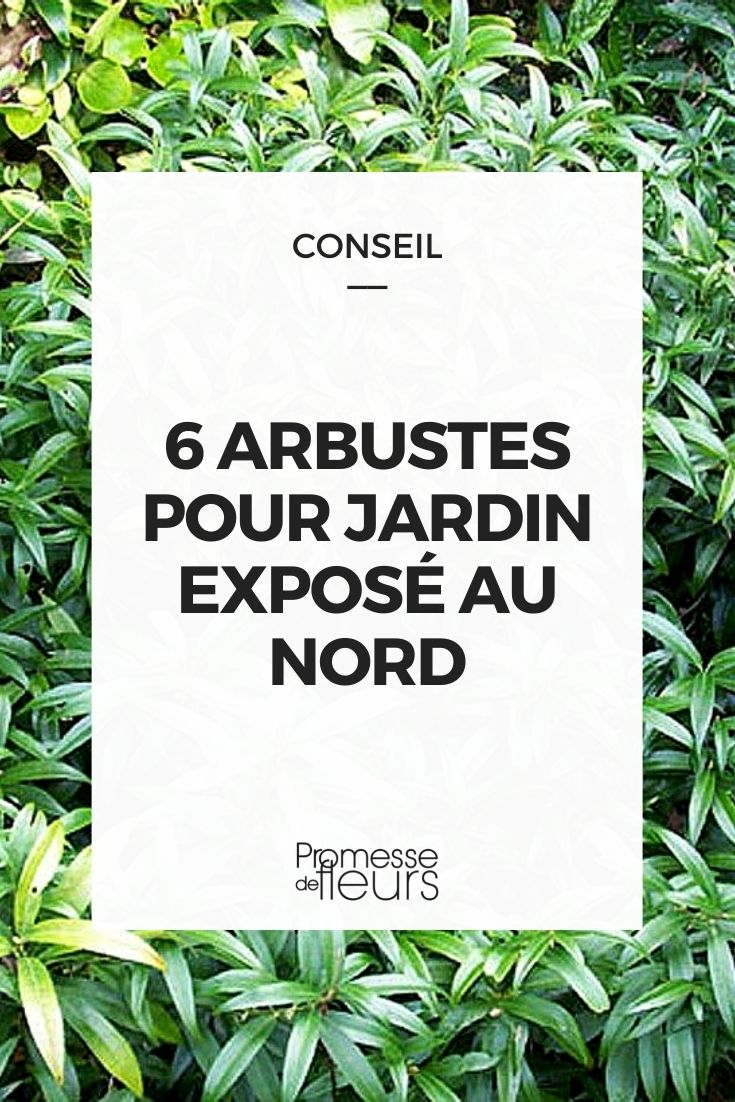
































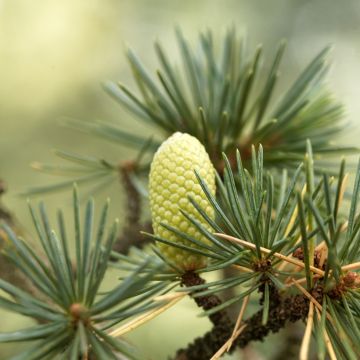
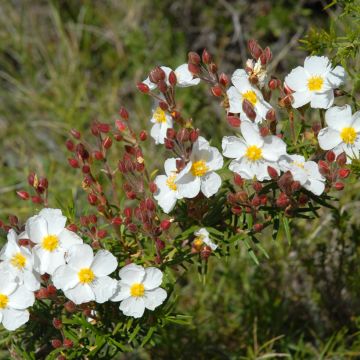
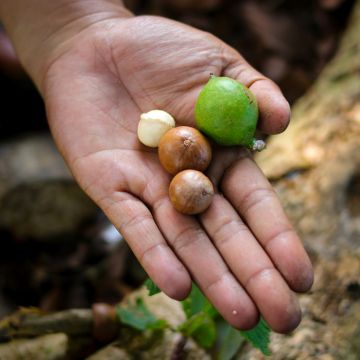

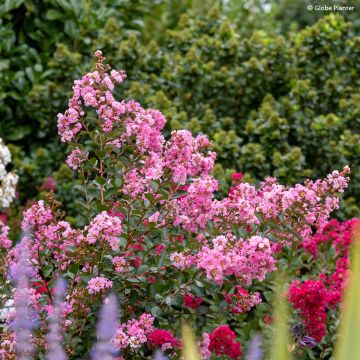

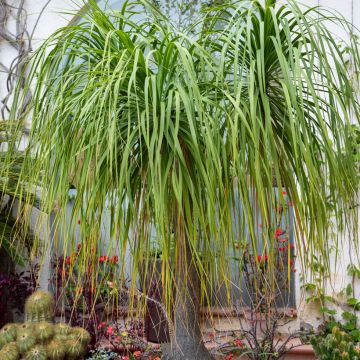
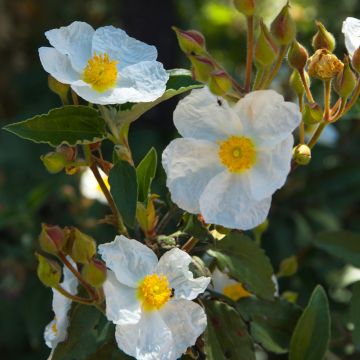
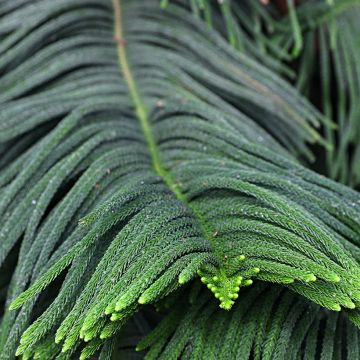
Comments